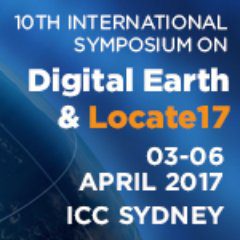International Symposium on Digital Earth & Locate17 to Boost Collaboration in Intelligent Transport and Smart Cities

Sydney, Australia – 7 March 2017 – With driverless vehicles and drones poised for mass adoption, the International Symposium on Digital Earth & Locate17 in Sydney in April provides a forum for government, industry and start-ups to collaborate and become players in the emerging global Smart Cities industry.
“Mobility as a Service is transforming our cities and the spatial industry and technology start-ups are key parts of that,” says Susan Harris, CEO of Intelligent Transport Systems (ITS) Australia.
Harris – the keynote speaker for the Digital Earth & Locate17 conference?s Intelligent Transport stream – will outline the latest global developments and the pathways for Australia to leverage connected and automated vehicles, big data and positioning technologies.
“We need to be ready in Australia. We are well placed to be part of the global Smart Cities technology industry, creating business opportunities and ensuring that our cities remain as liveable as they can be,” says Harris. “But technology is moving very quickly and early collaboration is vital.”
The capture and exchange of rich 2D and 3D spatial information will increasingly underpin transport networks and cities. Driverless vehicles, for example, will constantly survey road conditions – sharing information about potholes, ice and other hazards – so other driverless vehicles, and human drivers, can avoid them.
Even minor road damage like cracks will be captured and shared so authorities can schedule repairs and prevent further deterioration. Drones will also play an increasing role in the capture of 3D data, and later as a new layer of autonomous transport.
“How does that spatial information get captured, managed and shared back out in ways that are reliable, safe, and commercially viable?” says Harris. “Australia is strong in both positioning technologies and big data, but we need to develop further skills and industry collaboration, including information sharing arrangements.”
With a program featuring more than 130 international and Australian speakers, Digital Earth & Locate17 provides a unique opportunity to understand digital transformation practices from around the world, and to develop and leverage geospatial data.
The two main conference days will be split into eight separate streams with topics including smart cities, virtual globes, intelligent transport, agriculture, engineering/utilities, smart sensors for natural resource management, water & climate, disaster & emergency management, and the geospatial economy.
The joint conference will be held 03-06 April 2017 at the new International Conference Centre Sydney. The Digital Earth & Locate17 Conference’s Market Day on Tuesday 4th April opens the exhibition to everyone and is an opportunity for private, government and start-up organisations to come together and explore collaborative and business opportunities.
About the International Symposium on Digital Earth
The International Symposium on Digital Earth is a flagship event of the International Society for Digital Earth. Founded in Beijing in 2006, ISDE is a non-political, non-governmental and not-for-profit international organisation principally promoting academic exchange, science and technology innovation, education, and international collaboration towards Digital Earth.
ISDE also explores Digital Earth as an enabling technology to play key roles in economic and social sustainable development, environmental protection, disaster mitigation, natural resources conservation and improvement of living standards.
About Locate17
The Locate Conference (Locate17) is the national conference of the spatial and surveying industries of Australia and New Zealand. The event is an initiative of the Surveying & Spatial Sciences Institute (SSSI), Spatial Industries Business Association (SIBA) and Geospatial Information & Technology Association (GITA).


